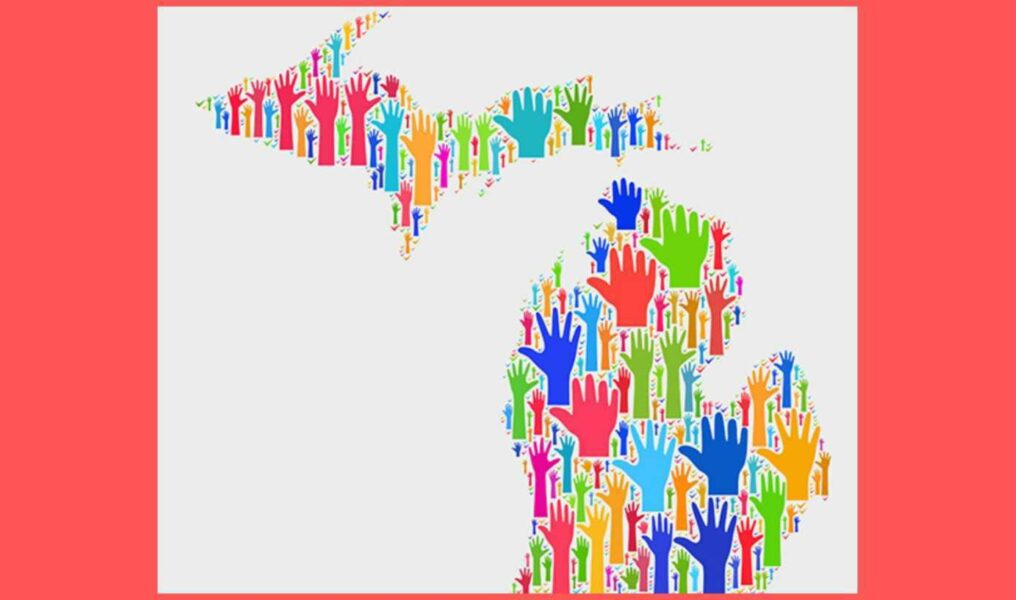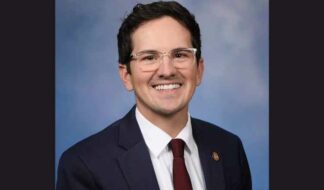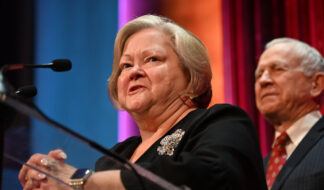The Primary Election Is Here. What LGBTQ+ Voters Need To Know.
Go vote. You have until Aug. 2.

I was an uneducated voter.
The first time I voted, I thought it would be easy: just vote for all the Democrats. I wasn’t expecting a test. For some offices, more than one Democratic candidate appeared on the ballot, for others, several. I seem to recall leaving half the ballot blank and hanging my head as I left the polling place.
In short, I didn’t understand the assignment.
To folks who follow politics, it’s common knowledge that a primary election narrows the field of candidates for a given elective office or determines the nominees who represent their political parties ahead of the general election. And they know Michigan operates on an open primary system, which means a voter can vote for candidates from any political party in primary elections — Michigan voters can help narrow the field of candidates from any party to help determine which will appear in the general election (typically, in November).
In a district that’s solidly blue or red, it’s easy to cite a scenario where the primary election effectively determined the candidate who went on to win in the general election. Yet despite their importance, voters consistently cast their ballots in general elections in greater numbers — by far — than they do in primary elections. There isn’t a lot of data explaining why that is.
The good news is that in the last midterm election, in 2018, turnout was up considerably in the primary. Michigan’s turnout rate, at 26.9 percent, includes 14.4 percent of registered voters who voted Democratic at the top of the ticket and 12.6 percent who voted Republican.
Michigan was well above average: Of all eligible voters in the U.S., 19.9 percent turned out for the primary that year. While this statistic may sound like nothing to write home about, the rate was 14.4 percent in 2014 and 18.3 percent in the 2010 primary election.
The 2018 midterm turnout was an improvement, to be sure — Michigan made significant gains in terms of turnout. Still, if only 26.9 percent of voters cast ballots, nearly three-quarters did not, even with a higher-than-normal turnout.
Exit polls following the 2020 election revealed seven percent of voters identified as LGBTQ+. Because LGBTQ+ voters overwhelmingly identify as Democrats, the community figures prominently in the primary election equation. Fifty percent of registered LGBTQ+ voters are Democrats, 15 percent are Republicans, 22 percent are Independents and 13 percent belong to another party or said they didn’t know.
If the 2020 general election is any indication, turnout for the LGBTQ+ community could again break records. That year, turnout represented nearly double the community’s proportion of the general population. However, voter registration rates are less impressive. About one in five, or 21 percent,
of LGBTQ+ adults are not registered to vote. Compare that to 17 percent of non-LGBTQ+ adults who are not registered.
Considering that only 14.4 percent of the electorate voted Democratic in the last midterm primary, the LGBTQ+ community has an outsize opportunity to elect LGBTQ+ candidates as well as allies whose priorities align with the community. Landing on the right candidates can be challenging, however. There’s no guarantee the queer candidate is always the best one to represent an LGBTQ+ person. Once elected, LGBTQ+ politicians advocate for their community to varying degrees.
State Sen. Jeremy Moss is one such elected official whom LGBTQ+ Michiganders have come to rely on to champion queer causes. But he had to win a few elections to get to where he is today. In 2014, the former state rep won a four-way primary and went on to win handily in a solidly blue district in the general election. In that case, the primary effectively decided the winner of the general election.Moss faced no primary opponent for the Michigan House of Representatives in 2016, but for the 2018 Michigan Senate race, he again won a four-way primary and then the general election by a wide margin. He faces a primary challenge this year as well.
To LGBTQ+ Michiganders who think primary elections are less important than general elections, consider the record of Moss, who went on to not only lead on LGBTQ+ causes, but also such progressive issues as government transparency and criminal justice reform.
Voting continues through Election Day, Tuesday, Aug. 2. On the Michigan Secretary of State website voters can view a sample ballot, request and track an absentee ballot, verify voter registration and find a polling place, among other things.2022 LGBTQ+ Michigan Primary Election Candidates
Note: The following are only candidates with primaries; more candidate coverage prior to the general election. Michigan Senate (statewide race): Jeremy Moss : State District 11 Kelsey Heck Wood : SD13 Michigan House of Representatives:Find your state district here.
Mike McFall : House District 8 (candidate profile) Toni Mua : HD10 (candidate profile) Ricardo White : HD11 Alex Manwell : HD11 Jason Hoskins : HD18 (candidate profile) Noah Arbit : HD20 (candidate profile) Emily Stivers : HD75 Emily Dievendorf : HD77 The last day to vote in the primary election is Tuesday, Aug. 2. Polls will be open from 7 a.m. to 8 p.m.








